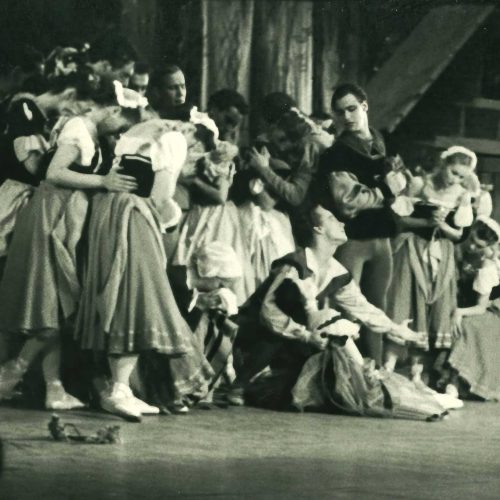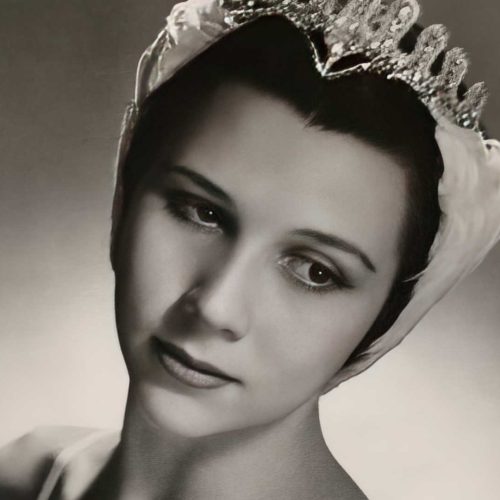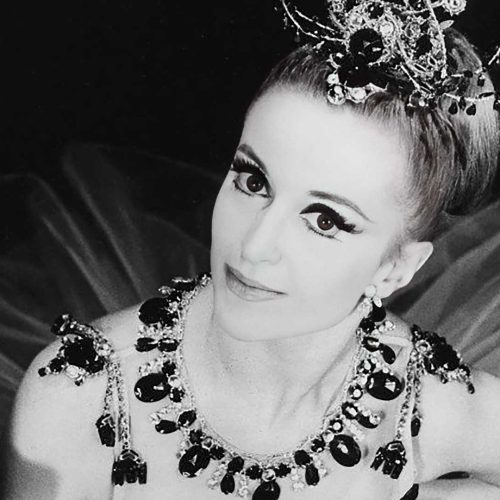By Bill Cooper, photographer
Photography has continually transformed itself, like all the other arts. How has this affected the photography of ballet?
When I joined Scottish Ballet in 1977 Peter Darrell organised a Choreographic Evening. I and other choreographers were invited to attend and it was the other choreographers who asked if I would also take photos. Kenny Burke requested to see the contact sheets and, unbeknownst to me shared them with Peter, and so, with 2 x Nikon FM2s, a 50mm F2 and a 105mm 2.8, my career in photography began.
A few years later, with the aid of a loan from The Dancers Resettlement, I was able to purchase lighting and darkroom equipment to set myself up professionally as a freelance photographer. In addition I was really helped by Margaret Lawford’s encouragement and my admiration of the two foremost dance photographers at that time, Anthony Crickmay and Leslie Spatt. In due course I was lucky to get commissions from London Contemporary Dance Theatre, the Royal Ballet and the Royal Opera.
During the Eighties most dance photographers still used mechanical cameras and lenses with a lever to wind film on and aperture and focusing adjustments done manually on the lens. They mostly shot in B/W 400 ISO film (either Kodak or Ilford) pushed in development to 800 ISO. Colour work was quite rare as Ektachrome T was slow at 160 ISO (later 320 ISO) and unforgiving in exposure latitude – you really needed a spot meter as well as using the camera meter. With such low ISO it was very difficult to catch any action due to the slow shutter speed.
And then, in the late Eighties, came two of the biggest changes for Theatre photography with the introduction of Nikons 80-200mm f2.8 auto focus lens, albeit the focus mode was quite noisy. In 1988 Canon produced the 200mm f 1.8 auto focus lens which was one of the finest optical lens ever produced when used with a 2.4 converter and also a 280 f 2.8, and ideal for opera photography. Then followed the Canon EOS 100 in 1991, one of the quietest cameras around. Now you no longer had to wind on the camera manually as autofocus and the ability to change aperture on the camera was all automatic. However, while putting the EOS 100 in a camera blimp made it almost silent, changing a film was noisy, so not easy to use during a performance. All too often a solo or pas de deux would start just as you came to frame 36 and you would have to wait for the interval!
This along with Fuji colour 800 ISO changed theatre photography. Now one could shoot colour and B/W for newspapers from the same film, a choice that had been impossible with colour transparency. However this also meant photographers no longer processed films themselves and I was probably the only photographer to learn C41 process for negatives and thus was able to print my own colour prints. This also created a change in commissions in that previously it was quite usual to use 2 photographers, one for colour and one for B/W.
The real change for Dance photography came in 2004 with the introduction of digital SLR thus making overnight film obsolete. Up until this time photographers had to rush to develop the negative, produce contact sheets and, with the aid of a loupe, make a selection with the press officer and then print off six of each selected. Not only was it the autofocus with the introduction of a whole range of optically improved lenses but the quality of the images produced by the new sensors was stunning. The ability to shoot with an ISO of 3200 and at a pinch 6400 meant you were able get action shots that were impossible before and with photoshop you were able to improve shadow details and the general quality of an image. Although they were expensive you no longer had the cost of negatives, processing and printing. In addition you could get a thousand images on one card and send them digitally thus removing the need to use bikes or couriers.
In 2017 Sony introduced the Sony a9 mirrorless which was revolutionary. Now you were able to see a digital image that showed you exactly the image on the sensor and, in some respect more importantly, it had an electronic rolling shutter that was totally silent and with almost no banding. Subsequently both Nikon and Canon introduced versions but initially with slight banding in silent mode although these have now been almost entirely eliminated. Using them however is a learning curve as the images you see are not actually live, there is the minutest delay in the chip in creating the images, and this took most photographers of dance a little time to get used to. However with the camera able to take 30 shots a second it is very easy to get all the action shots.
Having reflected and detailed the changes I have witnessed I conclude by saying that I find it wonderful to be able to get such quality shots and 30 frames a second in silent mode and, albeit there are thousands of action shots and split jete images on the internet, that special moment is still elusive, even with all the modern cameras, so when I see one it is always a joy.



